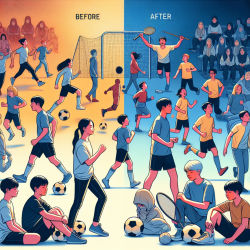As speech therapists and educators, we continually seek ways to refine our practices and methodologies to better serve our students. The study "Normes phonétiques de base pour l'enfant franco-québécois" by John Ryalls, Annie Larouche, Christine Dupont, and Annie Fournier, offers invaluable insights into the phonetic performance of French-speaking Quebec children. This research provides a foundational understanding of basic phonetic norms, which can significantly enhance speech therapy practices.
The study meticulously analyzed the phonetic performance of ten normal Quebec French children to establish basic acoustic norms. By combining voiced and voiceless occlusives with the three extreme vowels of the vowel triangle, the researchers presented a comprehensive overview of the phonetic capabilities of these children. This research is crucial, as there has been a lack of acoustic data on child speech in Quebec, despite the region's significant Francophone population.
For practitioners, implementing the outcomes of this research can lead to more tailored and effective therapy sessions. Understanding the specific phonetic characteristics and norms of French Quebec children allows therapists to identify deviations and target interventions more accurately. This is particularly beneficial in online therapy settings, where TinyEYE specializes, as it enables therapists to leverage technology to deliver personalized, effective treatment.
Additionally, the research highlights the importance of considering the acoustic differences between children's and adults' phonetics. These differences are not merely academic; they have practical implications for therapy. For instance, the study found that children exhibit a wider range of acoustic features in consonants and vowels, which could impact how speech therapists approach phonetic correction and training.
Encouraging further research in this area is also vital. While "Normes phonétiques de base pour l'enfant franco-québécois" provides a solid foundation, ongoing studies will continue to enrich our understanding and practices. As speech therapists, staying abreast of such research and integrating new findings into our methodologies is essential for providing the best possible care.
In conclusion, "Normes phonétiques de base pour l'enfant franco-québécois" is a pivotal resource for speech therapists working with French-speaking children in Quebec and beyond. By applying these phonetic norms in therapy sessions, practitioners can enhance the effectiveness of their interventions. Furthermore, this research underscores the need for continued exploration in the field, promising further advancements in speech therapy practices. To read the original research paper, please follow this link: Normes phonétiques de base pour l'enfant franco-québécois.










